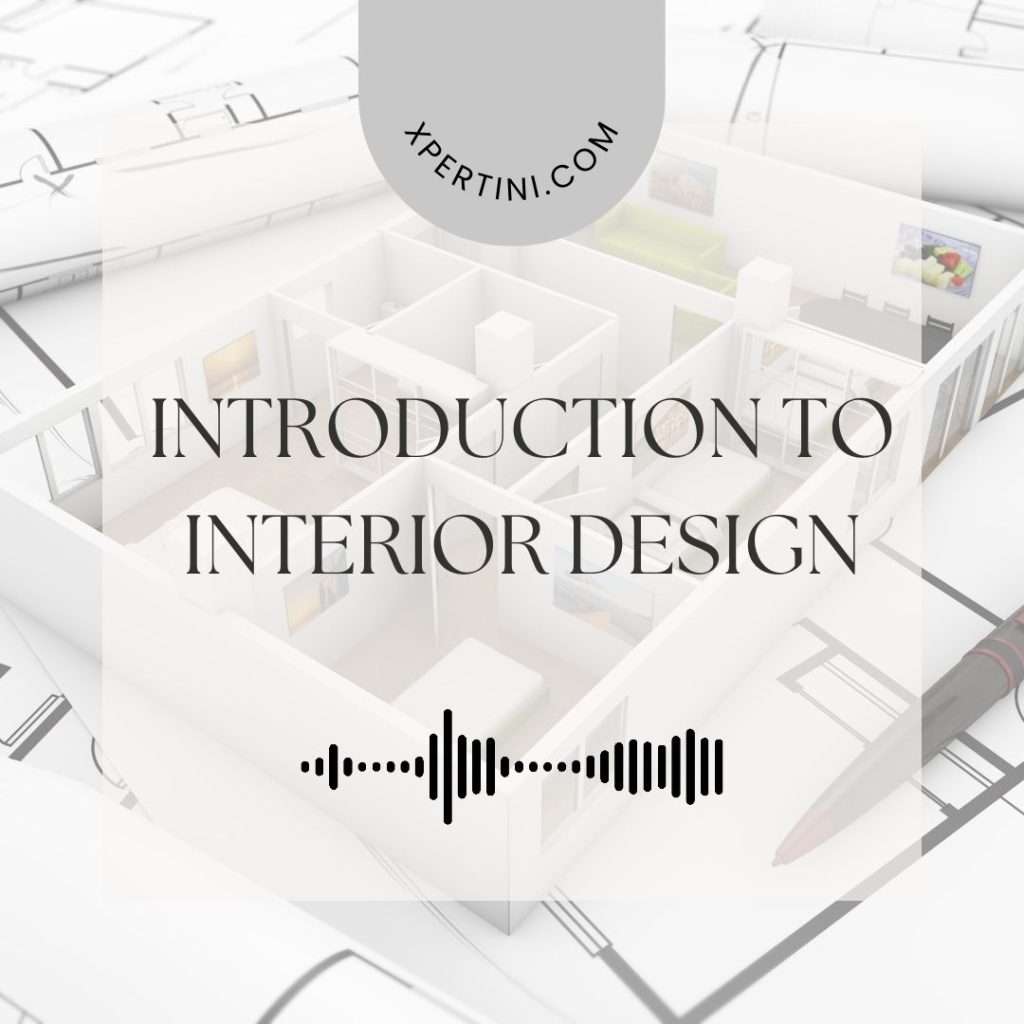Introduction to Interior Deisgn
Course Summary
Start on a transformative journey into the world of interior design, where the convergence of theory and practice unveils the secrets to crafting spaces that inspire, captivate, and endure. Rooted in a rich historical narrative, our course invites you to traverse the annals of time, exploring the evolution of interior design through the lens of influential designers and epoch-defining movements.
As you navigate this captivating design history, you’ll gain invaluable insights into the foundational principles and elements that underpin every exceptional interior composition. From the delicate dance of balance and proportion to the rhythmic interplay of line, shape, and color, you’ll develop an understanding of how these elemental forces shape spatial experiences and evoke emotion.
But theory alone is but a canvas awaiting the master’s brush. Delve into the art of spatial planning, mastering space analysis, circulation design, and programming through immersive exploration.Armed with this knowledge, you’ll begin on a voyage through the diverse landscape of design styles, from the timeless allure of tradition to the cutting-edge aesthetics of contemporary and minimalist expressions.
Yet, no designer’s toolkit is complete without the mastery of tools and technology. In our digital age, proficiency in design software is not merely advantageous—it’s essential. With expert guidance, you’ll navigate the digital realm with finesse, harnessing the power of drafting, rendering, and presentation software to bring your visions to life with unparalleled clarity and precision.
But design is not merely an exercise in aesthetics; it’s an orchestration of light, texture, and materiality. Through an exploration of color theory and lighting design principles, you’ll learn to manipulate these elemental forces to shape mood, perception, and ambiance, breathing life into every space you touch.
In a world increasingly cognizant of environmental stewardship, sustainability isn’t just a trend—it’s a moral imperative. Our course empowers you to navigate the complex landscape of material selection, discerning eco-friendly options amidst a sea of choices to craft designs that not only endure but inspire responsible living.
As you chart your course through this immersive journey, you’ll gain not only the technical acumen but also the strategic insight needed to navigate the diverse career pathways within the interior design industry. Whether you’re an aspiring designer, a seasoned professional seeking to expand your repertoire, or a homeowner eager to unlock the full potential of your living spaces, our course offers a transformative odyssey into the art and science of interior design.
Course Overview
Interior design is an essential aspect of creating functional and aesthetically pleasing spaces. This course serves as an introduction to the principles, practices, and theories of interior design. Through a blend of theory and practical application, students will gain a comprehensive understanding of the fundamental concepts necessary for a successful career in interior design.
Course Objectives
- Understand the basic principles and elements of interior design.
- Learn about the historical evolution of interior design and its influence on contemporary practices.
- Develop skills in spatial planning, color theory, and material selection.
- Explore various design styles and their applications in different contexts.
- Gain proficiency in using design software and tools relevant to the field.
- Understand the role of lighting, furniture, and accessories in interior design.
- Analyze real-world examples to apply theoretical knowledge.
- Develop critical thinking and problem-solving skills specific to interior design challenges.
- Learn about sustainable design practices and their importance in modern interior design.
- Explore career opportunities and pathways within the interior design industry.
Course Outcomes
- Identify and apply the fundamental principles of interior design in practical projects.
- Demonstrate an understanding of the historical context and evolution of interior design through written assignments and presentations.
- Acquire proficiency in spatial planning techniques through exercises and design projects.
- Analyze and evaluate different design styles and their suitability for various architectural spaces.
- Use design software effectively to create digital renderings and presentations.
- Demonstrate competence in color theory and its application in interior design schemes.
- Understand the significance of lighting design and its impact on spatial perception.
- Select appropriate materials and finishes based on functional and aesthetic requirements.
- Explore sustainable design principles and integrate them into design solutions.
- Research and present on career opportunities and professional pathways within the interior design industry.
Course Audience
- Individuals interested in pursuing a career in interior design.
- Professionals seeking to enhance their knowledge and skills in interior design.
- Homeowners and enthusiasts looking to improve their understanding of interior design principles.

